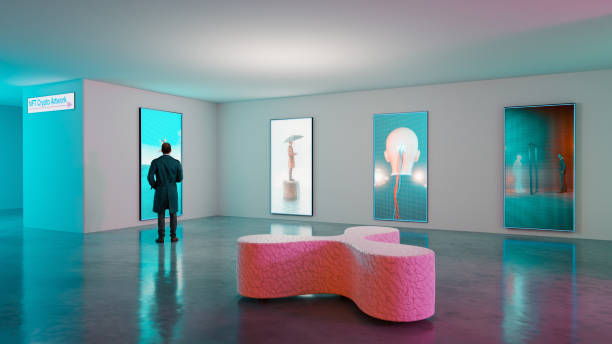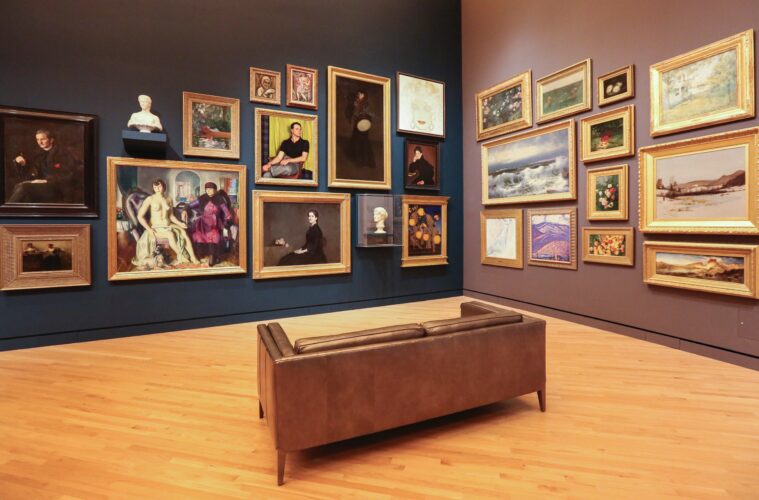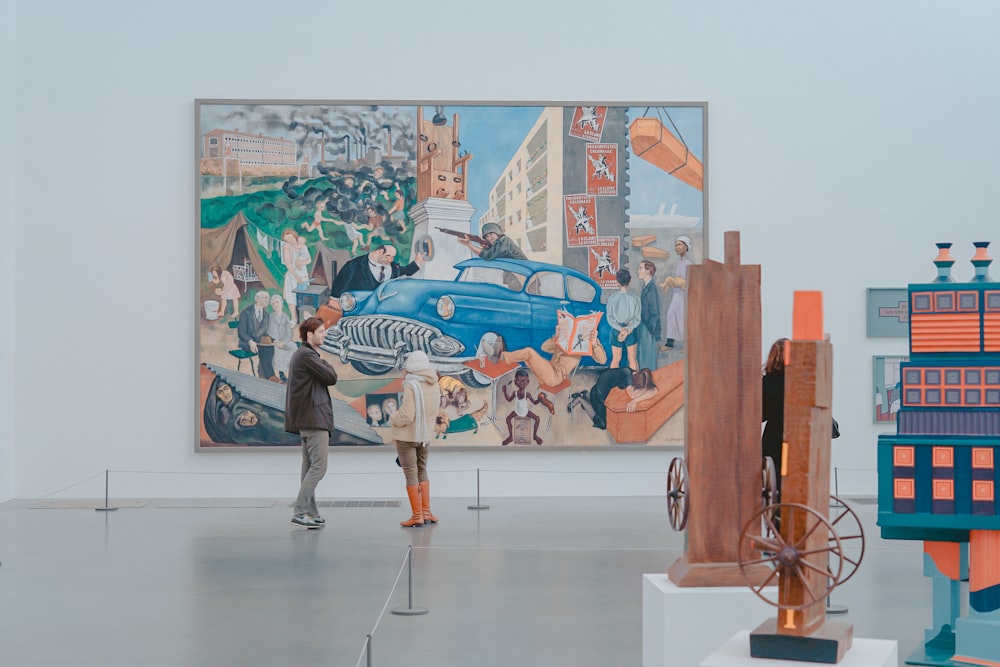
Imagine if you could go back in time and invest in 1/100th of Monet’s gorgeous Le Bassin aux Nymphéas. Most of us would never be able to afford the full price, but what if we could purchase a small corner of it?
When it was sold via Christie’s London in June 2008, you would have been the lucky recipient of $805,000, thanks to its well-deserved sales price of $80.5 million, the most expensive artwork sold in Europe by auction at the time.
This kind of fractional ownership and investment isn’t a new idea, but it is when it comes to blue-chip art. Until recently, investing in elite art has been reserved exclusively for ultra-wealthy art aficionados. But there’s a growing movement to make the art investment world accessible to all art collectors. Masterworks, one of the leaders in the fractional art space, is working to change the game, bringing Monet’s genre-inventing brushstrokes to Picasso’s cubist wonders and Warhol’s pop art marvels to more investors than just the elite.
In today’s finance landscape, this kind of fractional investment is not just limited to art, either. But how is it possible to own a fraction of a piece of art, or any other tangible, physical asset? Rest assured, there’s no actual cutting up of art to make it happen. Let’s look at how the model works, and what it would look like to own a fraction of a masterpiece.
Fractional ownership can democratize blue-chip art
Blue-chip art has long been an exclusive playground for the ultra-rich, leaving the vast majority of art lovers and retail investors to gaze from a distance. The allure of owning these prestigious artworks is undeniable, but the high costs and limited access have kept them out of reach for most. However, a new trend is opening the doors to blue-chip art for everyday art enthusiasts: fractional ownership.
Fractional ownership allows retail investors and hobbyists to get in on the ground floor. Instead of needing to accumulate enough capital to purchase an entire work of art, investors can own a fraction of valuable artworks, including masterpieces by legendary artists like Monet, Picasso, and Warhol. Take Masterworks, for example – they’re pioneers in this space, making the once unattainable art market accessible to a wider audience.
How does fractional ownership work? Instead of purchasing an entire artwork worth millions, investors can now buy shares in artwork through platforms like Masterworks. This makes it possible to invest with a smaller amount.
Masterworks specifically creates fractional ownership by pairing each piece of art with a limited liability company (LLC). Each LLC serves as a legal entity that holds ownership of the artworks on behalf of the investors. Masterworks users can purchase shares in these LLCs, becoming shareholders and partial owners of the artwork. When the art is sold, hopefully at an appreciated value, the users earn a profit.
While Masterworks does offer shares in paintings by household name artists, the company focuses on conducting research and due diligence to identify high-quality artworks with the potential for appreciation in value. The team explores art galleries, private collections, and art market specialists to discover investment-worthy pieces.
Fractional ownership offers not only the chance to own a piece of the art world but also financial advantages. By diversifying their investments across multiple artworks, investors can spread their risk and potentially enjoy the rewards of the art market’s appreciation.
Beyond art, fractional ownership is part of a larger trend that democratizes alternative investments. Just as technology has made fractional real estate, intellectual property, vintage collectibles, and other assets accessible, it’s now transforming the art market, allowing more people to participate and indulge in the luxury once reserved for the elite.
Alternative art investment models

Masterworks is by no means alone in the fractional art investment space. For anyone interested in entering that realm, it’s worth investigating other platforms and funds that enable fractional art investments, such as Artopolie, Rally, and Otis.
Artopolie, for example, distinguishes itself by focusing on emerging contemporary artists. Investors can buy and trade shares in curated collections of artwork, rather than individual pieces like Masterworks. By allowing fractional collection ownership, Artopolgie aims to foster a sense of community and engagement between investors and artists.
One of the key benefits of Artopolie is the ability to access fractional ownership of artworks from up-and-coming artists, potentially offering higher growth potential. However, as with any investment in emerging artists, there is a higher level of risk involved. Any art collector could tell you a Picasso is worth a lot of money; contemporary artists are harder to predict.
Rally, meanwhile, offers fractional ownership in assets beyond art. Investors can stake their claim on classic cars, sports memorabilia, and more. Rally acquires and stores the assets, issuing shares to investors.
Unlike Masterworks, Rally allows investors to vote on asset-related decisions, attend events, and potentially trade their shares on the platform’s secondary market, making it more of a community-oriented system. Plus, an additional benefit of the platform is the ability to diversify beyond the art market.
Otis is yet another potential platform for art enthusiasts to explore. Recently acquired by crypto company Public.com, it offers fractional investment opportunities in more than just art – collectors can invest in first-edition books, rare sneakers, trading cards, and even NFTs. Rather than Masterwork’s LLC model, investors on Otis use a securitization model instead. Each cultural asset on the platform has been securitized with the SEC and broken into shares.
These are just a few of the potential platforms and models available for fractional investment in art and culture. These examples only demonstrate just how wide the range of available artworks, investment structures, and fees are.
When choosing a platform, investors should take liquidity, transparency, and investor rights into consideration. For example, bigger platforms with more established secondary markets may enjoy greater liquidity. One platform may offer voting rights on major decisions, while another only gives investors a limited say in asset-related decisions.
Ultimately, it’s a great time to be an art investor. It’s never been more accessible, and enthusiasts can pick and choose the platform that best suits their needs.
The growing appetite for nontraditional investment
While asset diversification is almost always a good idea, the rise in nontraditional investment isn’t just about money. Collectors want to feel fancy. That’s why these platforms all cater to luxury tastes. The casual investor is not investing in, for example, fractional oil pipelines or fractional cargo ships, though those might be lucrative.
Platform growth has been limited almost exclusively to what have historically been considered luxury purchases. Just to offer two such examples beyond art, fractional real estate and fine wine have both seen a surge in interest and popularity.
With that in mind, it’s worth zooming out to look at the broader advantages and disadvantages of fractional alternative investments. Aside from diversification, fractional investment also allows investors with less available capital to participate in the market.
However, there are unique risks associated with this investment model, too. Fractional ownership is not immune to market volatility, as fractional NFT owners can no doubt attest to. Furthermore, luxury assets tend to be fairly illiquid compared to more traditional assets such as stocks or bonds. While they hold value well, they tend to need a longer time horizon to realize their full potential.
Finally, the biggest trade-off is control. While some markets and platforms allow community engagement and joint decision-making regarding the fractionally owned asset, it’s not comparable to simply owning an asset outright. Back to the Monet example, imagine if a fractional investor believed it would have been better to wait a year to sell the piece of art. That investor would have no say in when the sale took place.
Ultimately, as with any investment model, fractional ownership comes with pros and cons.
Final thoughts on fractional art ownership
Art aficionados now have a previously unreachable chance to join the world of luxury fractional investments. Platforms like Masterworks are making art investments more accessible for retail and more casual investors, not just those with enough capital to participate in whole asset ownership.
This shift in the investment landscape opens up new possibilities for individuals to explore art and other fractional investment options. By embracing this evolving landscape, art enthusiasts and investors can broaden their horizons, diversify their portfolios, and take advantage of opportunities that were previously out of reach.
Published by HOLR Magazine.



